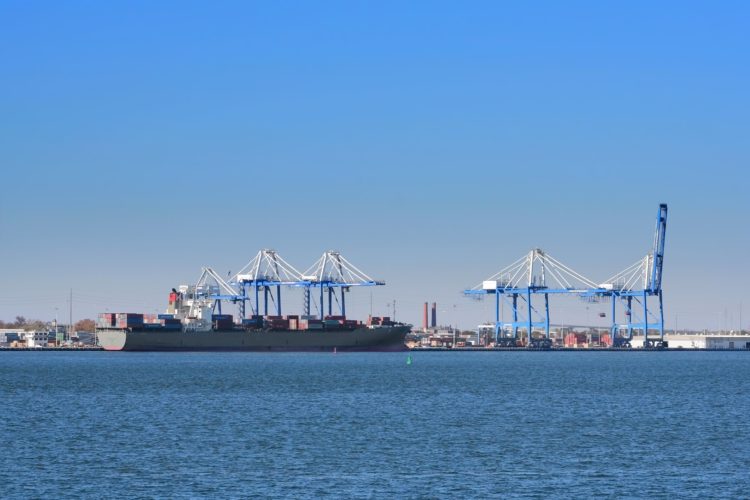Weathering the Transportation Storm


By Valerie Lemond, Carrier and Compliance Manager
There is a climate change upon us but it’s not necessarily related to the weather. It is the transportation industry – and it is starting to get hot. Many challenges and obstacles revolving around capacity, drivers, ELD mandates, congestion, and fuel are influencing the current trends as the winds shift away from the shipper and towards the carrier. This is leading 3PL’s like Bonded to work together with clients and carriers to weather the transportation storm.
Capacity Issues
 Capacity issues are already visible in the market and are expected to worsen. The American Journal of Transportation (AJOT) reports that 70% of all domestic freight moves by truck. They also indicated that 900,000 drivers are needed to simply handle the current volume of freight. With a booming US economy, the growth of e-commerce, and increased global activity, truck tonnage is expected to continue to rise despite the shortage of drivers. The increased volume of freight is also affecting the railroads. US weekly rail traffic is up close to 4% over the same period in 2017 according to the AJOT, and Canadian companies have reported a 6.5% increase in volume and a whopping 10.7% increase of intermodal units.
Capacity issues are already visible in the market and are expected to worsen. The American Journal of Transportation (AJOT) reports that 70% of all domestic freight moves by truck. They also indicated that 900,000 drivers are needed to simply handle the current volume of freight. With a booming US economy, the growth of e-commerce, and increased global activity, truck tonnage is expected to continue to rise despite the shortage of drivers. The increased volume of freight is also affecting the railroads. US weekly rail traffic is up close to 4% over the same period in 2017 according to the AJOT, and Canadian companies have reported a 6.5% increase in volume and a whopping 10.7% increase of intermodal units.
Driver Shortage
It’s truck drivers that represent the most worrisome constraint on US economic growth. The capacity crunch caused by the lack of skilled drivers as well as fewer new entrants into the trucking industry is not new. In fact, it has been talked about as if imminent over the last decade or so. In a recent industry analysis by DAT Solutions, one truck was available for every 12 loads shipped in the beginning of 2018. This year’s shortage is causing retailers to decide if they should delay nonessential shipments or pay higher prices to get their goods delivered on time.
The Bureau of Labor Statistics estimates that the average age of the predominately male driver pool is 55 years – not far off from exiting the industry through retirement or losing their CDL as tighter health restrictions are imposed on commercial drivers. Annual compensation around $75,000 is the new normal along with the operational challenge of how often a company can send a driver home. Trucks moving on today’s highways are rolling billboards for recruiting new drivers with huge signing bonuses, but it’s yet to be determined if these efforts will truly make a difference.
ELD Mandates
The electronic logging device (ELD) mandate, fully enforced as of April 1, 2018, is also causing issues. Operationally, truckload lanes under 500 miles (short hauls) are becoming unattractive for a lot of trucking companies striving to maintain efficiencies in manpower, fuel costs, and profitability of loads. The same holds true, for example, on a run taking a day and a half to complete. Carriers will price this lane based on two full days if they cannot find work for the other half-day the truck is empty, causing a steep rise in the rate. Technological problems with the devices themselves have been a burden, especially for smaller trucking companies. Issues with the expensive devices malfunctioning in both the tracking accuracy and recording performance of the data are constantly being reported. Other issues reported by Clarrisa Hawes of Trucks.com are problems with uploading into the FMCSA’s (Federal Motor Carrier Safety Administration) system, yet any violation from improperly working ELD’s still falls on the carrier.
Fuel Costs
The most recent challenge revolves around rising fuel costs. The latest U.S. Energy Information Administration fuel pricing reports the average price of diesel reached $3.28 per gallon in May, a 29% jump from a year ago and highest level in 41 months. They could jump as high as $3.50 by the end of the year says Noel Perry, an industry analyst and principal with Transport Futures. According to the American Transportation Research Institute (ATRI), fuel accounts for 21% of carrier expenses in 2016 but is rapidly rising. And it’s not just carriers that are immune, ocean carrier MSC recently put out a customer advisory stating fuel prices are up more than 30% this year, and almost 70% from a year ago. All this is again helping the railroads, with Railway Age reporting the Cass Truckload Linehaul Index in April showed pricing up 8.2% year-on-year – the largest gain since the base year of 2005.
Congestion
Congestion is ultimately the largest culprit for costly delays, with the ATA reporting that congestion costs the trucking industry $50 billion annually. The rail yards and maritime ports all report congestion based on heavier freight volumes. For either rail, ramp, or port container yards, congestion and wait times were already proving to be a big problem and the ELD’s have added to the complication, thwarting independent contractors’ efforts to make money as a drayage company as reported by MAREX. The railroads are experiencing increased volume as shippers divert over the road shipments to rail in an attempt to save costs. The down side for the shipper is the additional transit time rail requires.
Not all ports are created equal, either. Some offer 24/7 operations while others do not. Sitting to wait in line to pick up or deliver containers does not make money for the independents that largely comprise the driver and equipment pool at ports, making this line of work unattractive. Other factors include the physical conditions of our infrastructure. With President Trumps’ $200 billion federal plan in limbo, there doesn’t seem to be any help on the horizon.
How We All Can Help
So what can 3PLs, shippers, and carriers do to address these various issues while working together to keep costs at a minimum? And meet service levels? Traditionally, all can become better partners by being flexible to work with, sharing pertinent information, billing and paying faster, unloading and loading quicker, and guaranteeing business for a set timeframe. Other suggestions include the use of digital technologies for better communication; consolidation of freight into larger shipments, longer lead times on orders, and improved turnaround speed for drivers. Having loads ready (pre-staged) for shipping, dock scheduling in time slots aligned with carrier resources (to reduce deadheads for the carrier), hours longer than 8-5pm at shipping/receiving facilities, and locations allowing trucks to park overnight are ideas worth thinking about. Also worth considering is routing international cargo via a port with smoother gate processes and/or longer hours of operations, especially at night, rather than a tight eight hour window during the day. If even some of these things can be accomplished, we may be able to weather the transportation storm after all.
Interested in talking with someone to learn a little bit more about our transportation capabilities, reach out to us here.
